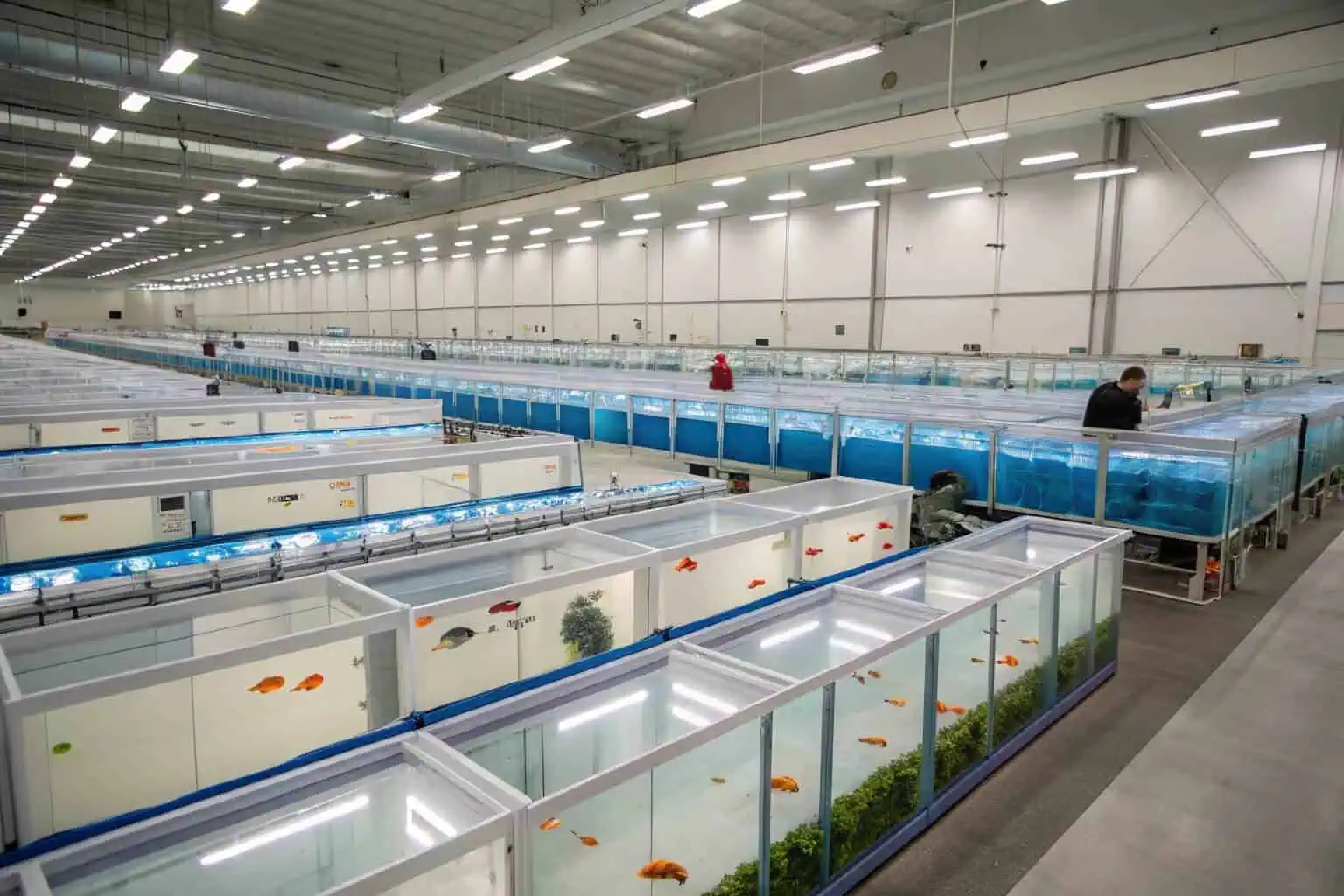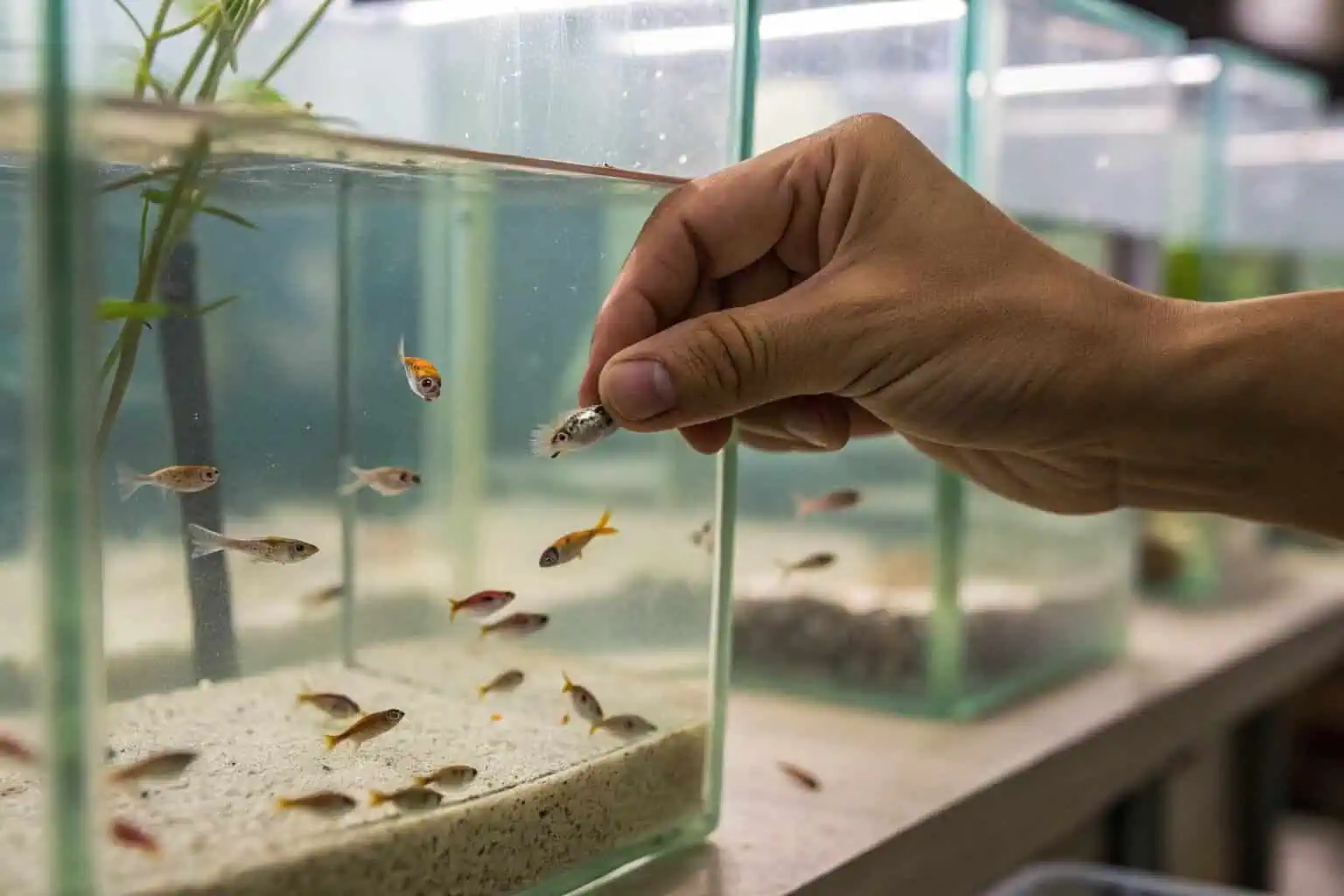What is the best way to start a betta breeding business?
Dreaming of a betta business but unsure where to begin? The path can seem complex. We'll guide you through the essential first steps.
The best way is to start small, research thoroughly, understand legalities, and master betta care. Develop a solid business plan focusing on quality and a niche market for success.

Starting any business needs careful planning, and a betta breeding venture is no different. As someone who has navigated the complexities of specialized manufacturing with Bancy, I know that understanding the fundamentals is key. Let's explore the key questions you likely have about betta breeding. This will help you make informed decisions and build a strong foundation for your potential business.
Do you need a license to breed betta fish?
Worried about legal hurdles for your betta business? Ignoring regulations can lead to serious issues later. Let's clarify the licensing needs for betta breeding.
Licensing for betta breeding often depends on your location and the scale of your operation. It's crucial to check local, state, and sometimes even national regulations before you start selling.

When I first explored liquid packaging solutions1 at Bancy, understanding the regulatory landscape for different materials and uses was a significant learning curve. It's a similar journey for aspiring betta breeders. The rules for breeding and selling live animals can be surprisingly intricate.
Local, State, and National Rules
The first thing to understand is that licensing isn't uniform. What's required in one city or state might be different in another. Some jurisdictions might have no specific license for small-scale hobbyist breeders who sell fish occasionally. However, if you plan to operate as a formal business, you'll almost certainly need some form of registration. This could range from a general business license to more specific agricultural or aquaculture permits2, especially if you scale up.
Scale of Operation Matters
The size of your betta breeding business3 heavily influences licensing. A hobbyist selling a few fry to friends is very different from a commercial farm shipping fish nationwide or internationally. As your operation grows, so does the likelihood of needing specific permits. Larger operations may also face inspections related to animal welfare, water discharge, or disease control. It's wise to plan for future growth and understand the thresholds that might trigger more stringent requirements.
Types of Licenses and Permits
Researching the specific licenses can feel overwhelming, but breaking it down helps. Look into what your city, county, and state require. Here are some common ones:
| License/Permit Type | Potential Requirement For | Where to Check Typically |
|---|---|---|
| General Business License4 | Operating any business in your locality | Your City or County Clerk's Office |
| Seller's Permit/Resale5 | Collecting sales tax if you sell fish directly to consumers | State Department of Revenue |
| Aquaculture License6 | Commercial fish farming (definition varies) | State Dept. of Agriculture/Fisheries |
| Fish Health Certificate | Ensuring fish are disease-free, especially for shipping | State Veterinarian/Aquatic Health Dept. |
| Wildlife/Pet Dealer Permit | If bettas are classified under local pet trade laws | Local Animal Control/State Agency |
It’s essential to contact your local Department of Agriculture, Fish and Wildlife Service, or city/county business licensing office. They can provide the most accurate and up-to-date information. Just like we at Bancy ensure our flexible tanks meet all relevant standards for safety and transport, you need to ensure your breeding operation is compliant from day one.
How long does betta breeding take for beginners?
Eager to see results from your betta breeding efforts? Patience is vital in this beautiful hobby, but how much is really needed before you see success?
For beginners, the initial betta breeding cycle, from conditioning adults to fry being large enough to sell (around 2-3 months old), typically takes about 3-4 months. This excludes initial setup and learning time.

The journey of breeding bettas7 is a marathon, not a sprint. When I first started in the manufacturing industry with Bancy, I spent a lot of time understanding the nuances of different materials for our flexible tanks8. It's a similar learning process in betta breeding; you can't rush nature or experience.
Initial Setup and Learning Curve
Before you even think about pairing fish, there's groundwork. You'll need to research betta care9 extensively, acquire the necessary equipment (tanks, heaters, filters, live food cultures), and properly cycle your tanks. This initial phase can take several weeks, or even a couple of months, depending on your dedication and prior knowledge. Learning about water parameters, recognizing breeding behaviors, and understanding basic fry care are all part of this essential preparation. Don't underestimate this period; a strong foundation here prevents many future problems.
The Breeding Cycle Itself
Once you're set up, the actual breeding cycle has several stages:
- Conditioning Adult Bettas10: This involves feeding your chosen pair high-quality live or frozen foods for about 2-4 weeks to get them in peak breeding condition.
- Courtship and Spawning11: Introducing the male and female can take a few days of careful observation. Spawning itself usually occurs within 24-48 hours once the female is receptive.
- Egg Development and Hatching: The male will care for the eggs in his bubble nest. They typically hatch in 24-72 hours.
- Raising Fry to Juvenile Stage12: This is the most time-consuming part. Fry are tiny and delicate. They need specialized food and pristine water conditions. It takes about 8-12 weeks for them to grow large enough to show good color, for males to be separated (jarred), and to be considered saleable.
Factors Affecting the Timeline
Several factors can influence how long each stage takes. The health and genetics of your broodstock play a huge role. Water quality and temperature stability are critical. Your experience in managing these variables will also impact the timeline.
| Breeding Stage | Typical Duration | Key Considerations for Beginners |
|---|---|---|
| Research & Setup | 1-2 months+ | Thorough learning, equipment purchase, tank cycling correctly |
| Conditioning Adults | 2-4 weeks | High-quality varied diet, optimal and stable water parameters |
| Spawning Process | 1-7 days | Observing behavior carefully, providing a suitable spawning site |
| Egg Hatching | 1-3 days | Maintaining stable temperature, ensuring male isn't eating eggs |
| Fry Rearing (to 1cm) | 2-4 weeks | Consistent live food (infusoria, BBS), daily gentle water changes |
| Grow-out (to saleable) | 6-10 additional weeks | Transitioning foods, individual jarring for males, space needs |
Similar to how we manage production timelines for custom orders at Bancy, from initial design to final product, betta breeding requires careful stage management and an acceptance that good things take time.
How do I start a betta fish farm?
Ready to scale up from a hobbyist setup to a dedicated betta fish farm? A farm requires much more planning and resources than just a few tanks.
Start a betta fish farm by creating a detailed business plan, securing adequate space and funding, designing an efficient multi-tank setup, sourcing quality broodstock, and mastering breeding and water management at scale.

Thinking about a betta farm reminds me of when we expanded Bancy's production lines for our liquid storage solutions. Careful planning for space, workflow, and quality control was absolutely key to managing increased output efficiently and meeting diverse client needs. The same principles apply to scaling up a betta breeding operation13.
Business Planning is Crucial
This is non-negotiable for a farm. Your business plan should cover:
- Market Research14: Who is your target customer (local hobbyists, online buyers, pet stores, wholesalers)? What betta types (e.g., plakat, halfmoon, koi) are in demand? What are competitive prices?
- Financial Projections15: Detail your startup costs (tanks, shelving, filtration, initial broodstock, supplies, utilities). Project ongoing expenses (food, electricity, water, packaging, marketing) and estimate potential revenue. This helps determine feasibility and funding needs.
- Operational Plan16: How will you manage breeding schedules? What are your feeding routines and water change protocols for hundreds, or even thousands, of fish? How will you handle disease prevention and culling?
- Marketing and Sales Strategy: How will you reach your customers? Online store, social media, fish shows, direct sales to shops?
Setting Up the Physical Farm
Space is a primary consideration. You'll likely need a dedicated room17, a large garage, a basement, or even a separate outbuilding. Consider:
- Environment: Insulation for temperature control, proper ventilation, easy access to water sources and electricity (with GFI outlets near water).
- Tank Systems: You'll need numerous containers. Barracks-style systems or individual jars for mature males are common. Larger tanks are needed for breeding pairs, females, and growing out fry. For temporary holding or large grow-out batches before individual jarring, solutions like our Bancy collapsible fish tanks could be highly efficient. We can even customize sizes for specific farm layouts or needs, just as we do for industrial liquid storage.
- Water Management: At scale, this is critical. Will you use individual sponge filters, or a centralized filtration system? How will you manage large-volume water changes efficiently? Invest in reliable water testing equipment.
Sourcing and Managing Broodstock
The quality of your farm's output depends entirely on your broodstock.
- Acquisition: Source high-quality, healthy breeding pairs from reputable breeders. Don't skimp here.
- Genetics: Develop a strategy for line breeding18 to enhance desired traits while maintaining genetic diversity to avoid issues. Keep meticulous records.
| Aspect of Farm Setup | Key Considerations & Planning | Example Actions for a Betta Farm |
|---|---|---|
| Business Plan | Market viability, detailed financial forecasts, operational efficiency, legal compliance | Research local and online markets, calculate all costs, outline daily/weekly tasks, check permits |
| Space & Infrastructure | Dedicated, climate-controlled area, robust shelving, safe water/power access | Convert a basement/garage, install heavy-duty racks, ensure proper wiring and plumbing |
| Equipment Inventory | Hundreds of tanks/jars, multiple heaters & filters, bulk food supplies, shipping materials | Purchase jars in bulk, invest in commercial-grade heaters, set up live food cultures at scale |
| Broodstock Management | Sourcing diverse, high-quality lines, quarantine protocols, record keeping for genetics | Network with established breeders, implement strict quarantine for new fish, track lineage |
| Water Management System | System for large volume water changes, consistent parameter monitoring, waste disposal | Design an efficient water change system (e.g., Python-style or automated), regular testing schedule |
| Sales & Marketing Channels | Online presence (website, social media), relationships with pet stores, attending fish shows | Develop an e-commerce site, build a brand on Instagram/Facebook, network with retailers |
Starting a farm is a significant step, moving from a passion to a full-fledged business. My experience with Bancy shows that sustainable growth comes from a solid plan and consistent execution.
How hard is it to breed bettas?
Wondering if you have what it takes to successfully breed bettas? It's not just putting two fish together; challenges definitely exist along the way.
Breeding bettas can be moderately challenging. While the basic process seems straightforward, consistent success requires dedication, keen attention to detail, consistent care, and good problem-solving skills, especially with fry rearing and managing aggression.

From my perspective as someone deeply involved in manufacturing specialized products like Bancy's durable liquid bladders, I can say that achieving consistent quality in any specialized field requires precision and commitment. Perfecting our dual-welding technique at Bancy, for example, took time and meticulous effort. Breeding bettas successfully shares that need for careful attention to detail.
Technical Aspects of Breeding
There's a science to it. Key technical challenges include:
- Water Parameters: Fry are incredibly sensitive to fluctuations in water quality, especially ammonia, nitrite, and nitrate levels. Maintaining pristine and stable conditions is non-negotiable. This often means daily small water changes for fry tanks.
- Feeding19: Newborn fry are tiny and require microscopic live foods like infusoria or vinegar eels for the first few days. You'll likely need to culture these yourself. Transitioning them to baby brine shrimp and then to other foods requires patience.
- Disease Prevention and Treatment: Bettas, especially fry, can be susceptible to common fish diseases like fin rot or velvet if conditions aren't optimal. Recognizing early signs and knowing how to treat them is vital.
Behavioral Challenges in Betta Breeding
Betta splendens earned their name "Siamese Fighting Fish20" for a reason.
- Aggression: Managing aggression between the male and female during courtship and spawning is an art. The male can injure or kill the female if she's not ready or if he's overly aggressive. As male fry mature (around 6-8 weeks), they also become aggressive towards each other and must be separated into individual containers (jarring).
- Parental Care (or Lack Thereof): While male bettas are generally good fathers, building bubble nests and caring for eggs, sometimes they might eat the eggs or fry, especially if stressed or inexperienced. Occasionally, females may also eat eggs.
Time and Dedication Required
Breeding bettas is not a passive hobby if you want to do it well.
- Daily Care: Expect to spend significant time each day on feeding, water changes (especially for multiple fry tanks), and observation.
- Patience: Not every spawn will be successful. Sometimes pairs won't breed, eggs won't hatch, or you might lose a batch of fry. Learning from these experiences is part of the process.
| Challenge Area | Specific Difficulties Encountered by Breeders | Strategies for Success |
|---|---|---|
| Water Quality Mastery21 | Fry are highly sensitive to toxins; maintaining stability in small tanks | Daily partial water changes with aged/treated water, use of seasoned sponge filters, frequent testing |
| Fry Nutrition & Growth22 | Providing appropriate live foods for tiny mouths, successful weaning stages | Culturing infusoria and baby brine shrimp, gradual introduction of high-quality crushed pellets/flakes |
| Aggression Management | Male/female compatibility during spawning, aggression between maturing male fry | Careful, supervised introductions, providing hiding spots, timely separation and jarring of male fry |
| Disease Prevention | Fry vulnerability to common diseases (velvet, ich, fin rot), hygiene | Strict quarantine for new fish, maintaining impeccable tank hygiene, having basic medications on hand |
| Time Commitment & Burnout | Daily intensive care for multiple batches of fry, potential for discouragement | Realistic scheduling, automating simple tasks where possible (e.g., auto top-off), finding a mentor or community |
| Unsuccessful Spawns | Fish not conditioning properly, incompatible pairs, environmental stressors | Thorough conditioning with live foods, trying different pairings, ensuring stable and ideal water parameters |
While it has its challenges, the reward of seeing tiny fry grow into beautiful adult bettas is immense. Many find it incredibly fulfilling. It’s achievable with thorough research, starting small, being patient, and a willingness to learn from both successes and mistakes.
Conclusion
Starting a betta breeding business is a journey filled with passion, but it demands dedication, thorough research, and smart planning. Success hinges on producing quality fish through excellent care and employing sound business practices.
-
Explore this link to discover innovative liquid packaging solutions that can enhance your business efficiency and sustainability. ↩
-
Aquaculture permits are essential for larger operations. This link provides comprehensive information on the necessary permits and regulations. ↩
-
Understanding licensing requirements is crucial for compliance and successful operation of your betta breeding business. ↩
-
Understanding the General Business License is crucial for compliance and successful operation of your business. Explore this link for detailed guidance. ↩
-
A Seller's Permit is essential for tax compliance when selling goods. Learn more about the application process and requirements here. ↩
-
An Aquaculture License is vital for legal fish farming. Discover the requirements and steps to secure this license for your business. ↩
-
Explore this link to gain insights into effective techniques and tips for successful betta breeding. ↩
-
Discover the benefits of flexible tanks for aquatic environments and how they can enhance fish care. ↩
-
Exploring expert resources on betta care will ensure you have the knowledge needed for successful fish keeping. ↩
-
Explore this link to learn effective techniques for conditioning bettas, ensuring a successful breeding cycle. ↩
-
Understanding courtship and spawning is crucial for successful breeding; this resource will provide valuable insights. ↩
-
Discover expert tips on raising betta fry, ensuring they grow healthy and vibrant before sale. ↩
-
Learn about successful betta breeding practices to optimize your operation and ensure healthy fish. ↩
-
Understanding market research strategies can help you identify your target customers and their preferences, ensuring your farm's success. ↩
-
Learning how to create accurate financial projections is crucial for assessing your startup costs and potential revenue in fish farming. ↩
-
A well-structured operational plan is essential for managing breeding schedules and ensuring the health of your fish, which is vital for your farm's productivity. ↩
-
Exploring this resource will provide insights into optimizing space for fish farming, ensuring a successful setup. ↩
-
Exploring line breeding can help you learn how to improve your fish's desirable traits while maintaining diversity. ↩
-
Proper feeding is essential for fry growth. Discover expert tips on feeding newborn fish fry effectively. ↩
-
Explore the unique traits and behaviors of Siamese Fighting Fish to understand their care and breeding better. ↩
-
Understanding water quality is crucial for the health of your betta fry. Explore this resource to learn effective maintenance techniques. ↩
-
Proper nutrition is vital for fry development. This link will guide you on the best feeding practices for healthy growth. ↩